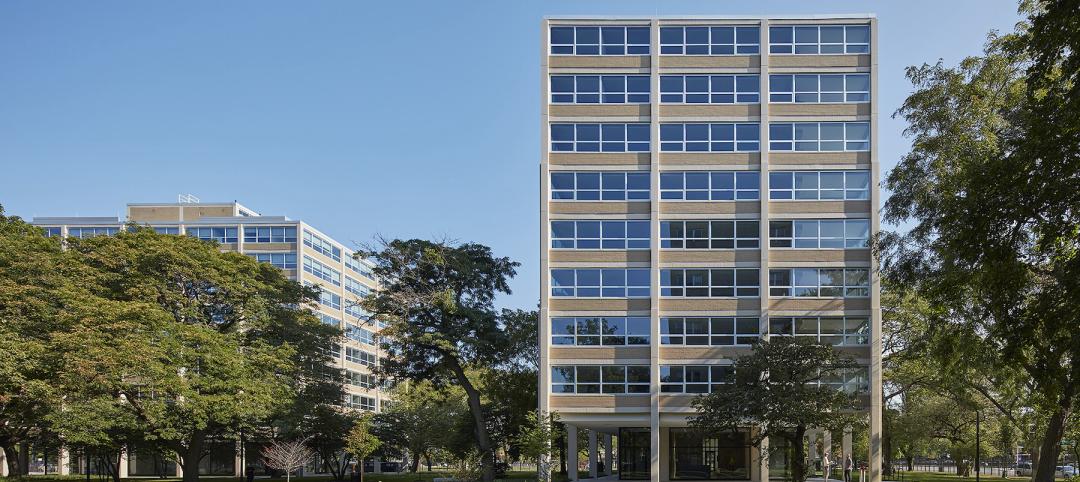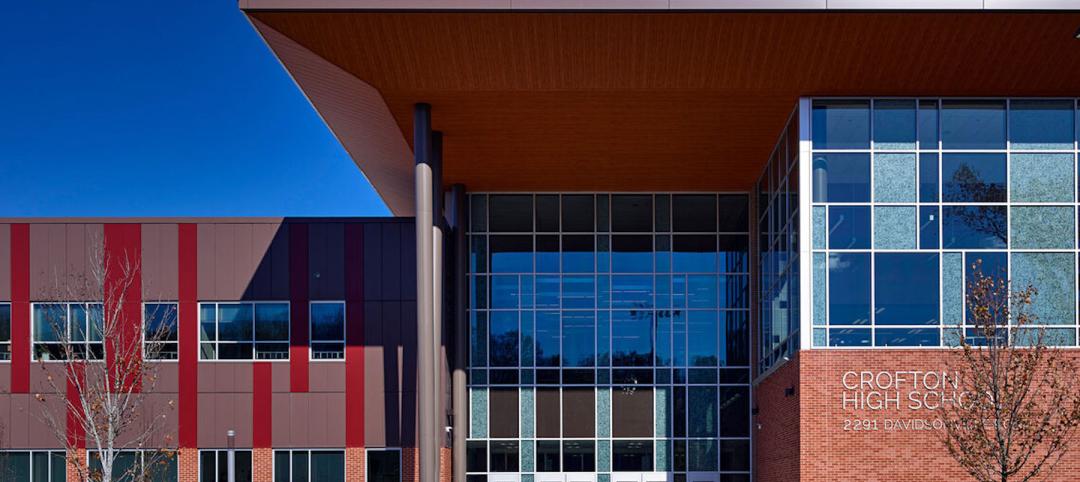Back in the halcyon days of 2006, energy analysis of building design and performance was a luxury. Sure, many forward-thinking AEC firms ran their designs through services such as Autodesk’s Green Building Studio and IES’s Virtual Environment, and some facility managers used Honeywell’s Energy Manager and other monitoring software. Today, however, knowing exactly how much energy your building will produce and use is survival of the fittest as energy costs and green design requirements demand precision.
“Energy is now a variable cost on the balance sheet, particularly with healthcare projects,” says Greg Turner, director of global offerings, Honeywell Building Solutions. “What we see happening for facilities managers is they’re talking to CFOs more regularly and the question is always. ‘What’s my energy cost going to be next quarter?’”
Building Teams and facility managers are using these energy analysis tools to keep clients’ bottom lines low and meet regulatory requirements for energy saving.
Green Building Studio: Innumerable design iterations
Green Building Studio is a Web-based tool that can help architects and designers perform whole building analysis, optimize energy efficiency, and work toward carbon neutrality earlier in the design process. Available via subscription service at www.greenbuildingstudio.com, Green Building Studio uses the DOE-2.2 simulation engine to calculate energy performance. It also creates geometrically accurate input files for EnergyPlus, the Department of Energy’s building simulation program. Crucial to the integrated interoperability of the program is the gbXML schema, an open XML schema of the International Alliance of Interoperability’s aecXML group. By using gbXML-enabled applications, Green Building Studio Web service users can eliminate redundant data entry and dramatically reduce the time and expense traditionally associated with whole-building energy simulation analyses.
“Our users will perform 50 to 100 iterations of a design,” says John Kennedy, senior manager, sustainable analysis products for Autodesk AEC Solutions and the CEO of GBS from its founding in 2004 through its acquisition by Autodesk in 2008. “They try out everything from type of glass to different levels of insulation, and each iteration requires a full simulation for proper energy use estimates. Running off of the Web, our users can run these calculations from the cloud and perform them a lot faster than if they were tied to their desktop resources.”
Engineering firm Glumac, based in Portland, Ore., uses GBS for energy analysis on many of its projects, such as the University of Hawaii at Manoa Recreation Center. Glumac’s scope of work included design review, whole building energy simulation, computational fluid dynamics analysis for natural ventilation, and sustainability consulting. The 67,000-sf project includes activity courts, locker rooms, aerobics facilities, and free weights. Glumac used GBS to quickly iterate energy consumption estimates for a variety of exterior shading devices, understanding energy use driven by landscape shading elements, and the effects of several different glazing configurations.
“Traditional analysis would have been too cumbersome to address these questions within our budget or within a fast enough timeframe to provide meaningful feedback to the design team,” says Skander Spies, an energy analyst in Glumac’s Portland office. Glumac created the initial geometry in Revit, then was able to import it into Green Building Studio and export a file compatible with other advanced analysis tools, such as EnergyPlus or eQuest. “This process results in more geometrically accurate models that take less time and budget to create, allowing our team to spend more time looking at the issues that matter,” says Spies.
In its most recent subscription update, Autodesk made the GBS service available to anyone with a Revit Architecture or Revit MEP subscription and integrated its features into Revit’s massing feature. Now, energy results are automatically updated in Revit, the company’s native building information modeling program.
“Building owners are asking more often for in-depth analysis,” says Autodesk’s Kennedy. “They want stronger performance guarantees for both new designs and renovations, and they’re asking about the drivers of building performance. We’re moving in the direction of making that data a normal, automated process.”
IESVE: Integrating documentation and design
Integrated Environmental Solutions was founded in 1994 in Scotland with the goal of developing primarily academic tools for building performance design and analysis and bringing them into mainstream use, according to founder and managing director Don McLean. In the interim, the company has launched commercially viable software that has grown to encompass design and analysis for all building design disciplines. Its products span a range of price and performance levels from the free and easy to the most detailed and rigorous.
IES’s main tool is its Virtual Environment (VE) Pro, a suite of software that integrates the entire process of designing buildings for environmental and energy considerations. Each module of the VE suite—for example, VE/Mechanical, VE/Electrical, or VE/Lighting—is tailored to analyze specific performance components of buildings. VE/Thermal includes energy performance measurement tools such as Apache SIM, Apache HVAC, and MacroFlo for total building and room-by-room energy calculation, simulation, and HVAC system design. VE Pro includes a full 3D modeling program for AEC professionals who want to create their designs natively. It can also import from Revit, SketchUp, or the gbXML file formats.
“You can perform the level of analysis you want all in one platform,” says Suzanne Robinson, an energy consultant at IES. “How detailed your building becomes is up to the user. We just want to engage them from the beginning in the design stage.”
VE Pro users can create baselines that integrate documentation in their design processes. The program’s LEED toolkit keeps track of compliance with LEED criteria and points across LEED-NC V2.2/V3, LEED for Schools V1/V3, and LEED Core and Shell V2/V3. The Sustainability VE toolkit tracks climate, natural resources, building metrics, construction materials, energy, carbon, daylight, solar shading, water, low- and zero-carbon technologies, and ASHRAE/CIBSE heating and cooling loads.
“It’s such a robust software engine we can more easily model complex designs,” says Mark Chu, a building physicist in AECOM’s advanced design group, based in Orange, Calif. “We can model things that we couldn’t before because the software isn’t constrained.”
Some of the projects AECOM has used VE Pro for energy modeling include the NASA Ames N232 Collaborative Support Building (registered for LEED Platinum) and NASA Johnson Space Center Building 26 (registered for LEED Gold).
Honeywell Energy Manager: Pinpoint performance issues
Energy Manager is a Web-based advanced energy management and information system designed to capture, analyze, and act on data to help solve energy problems in existing buildings. Energy Manager’s software uses an existing building’s in-place infrastructure to track energy dollars, impact of weather on consumption, and similar energy-related issues.
If a room or floor has leaky windows, Energy Manager can isolate higher heating costs in that area and report the problem back to the facility manager. It also uses diagnostics to show metrics and behaviors of pieces of equipment to be analyzed for peak performance. Energy Manager’s data can be accessed anywhere from the Web and can be used to set up daily or weekly weather-neutralized energy consumption reports e-mailed directly to supervisors.
“It’s designed to mine data,” Turner says. “You can create as many virtual metering solutions as your building needs. It’s designed to let customers add the functionality they need without adding new systems.” BD+C
—Jeff Yoders, Contributing Editor
Related Stories
Giants 400 | Aug 19, 2022
2022 Giants 400 Report: Tracking the nation's largest architecture, engineering, and construction firms
Now 46 years running, Building Design+Construction's 2022 Giants 400 Report rankings the largest architecture, engineering, and construction firms in the U.S. This year a record 519 AEC firms participated in BD+C's Giants 400 report. The final report includes more than 130 rankings across 25 building sectors and specialty categories.
| Aug 19, 2022
Cuningham appoints Jacqueline Dompe as new Chief Executive Officer
Cuningham, a national design firm, is thrilled to announce the appointment of Jacqueline Dompe as the firm’s Chief Executive Officer (CEO).
| Aug 19, 2022
Future sea rise could expose 720,000 more people on East Coast to flooding
An analysis by NPR based on modeling from the National Hurricane Center for New York City, Washington, D.C., and Miami-Dade County found future sea rise could expose about 720,000 more people to damaging floods later this century.
| Aug 19, 2022
Manassas Museum renovated to reimagine a civic design & engage the community
Manassas, VA has recently added to its historic Manassas Museum.
Architects | Aug 18, 2022
GSA names Charles Hardy, AIA, CCM, Chief Architect at GSA Public Buildings Service
The U.S. General Services Administration (GSA) has named Charles (Chuck) Hardy as GSA’s next Chief Architect, effective August 14, 2022. A licensed architect, workplace strategist, and certified construction manager, Hardy’s career with GSA spans more than 31 years, beginning in GSA’s Great Lakes Region as an architect and project manager.
| Aug 18, 2022
U.S. Treasury moves to boost affordable housing
The Department of the Treasury recently announced new guidance to “increase the ability of state, local, and tribal governments to use American Rescue Plan (ARP) funds to boost the supply of affordable housing in their communities,” according to a news release.
Daylighting | Aug 18, 2022
Lisa Heschong on 'Thermal and Visual Delight in Architecture'
Lisa Heschong, FIES, discusses her books, "Thermal Delight in Architecture" and "Visual Delight in Architecture," with BD+C's Rob Cassidy.
| Aug 18, 2022
The Illinois Institute of Technology restores three Mies van der Rohe buildings
With Dirk Denison Architects and Gilbane Building Company, the Illinois Institute of Technology has recently completed a $70 million housing project that has restored three Ludwig Mies van der Rohe buildings.
Multifamily Housing | Aug 17, 2022
California strip mall goes multifamily residential
Tiny Tim Plaza started out as a gas station and a dozen or so stores. Now it’s a thriving mixed-use community, minus the gas station.
| Aug 17, 2022
Focusing on building envelope design and commissioning
Building envelope design is constantly evolving as new products and assemblies are developed.

















